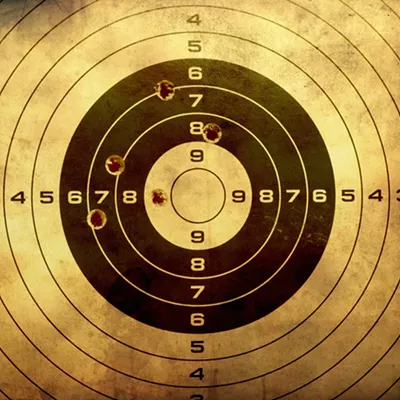I for one had hoped that the traffic engineers would have learned a thing or two from their Lincoln Street Bridge misadventure, from the Downtown Plan, the redesign of Post into a two-way street, the obvious popularity of angle parking and from growing neighborhood interest in strategies such as traffic circles. We are talking here about the importance of "traffic calming." The city's Comprehensive Plan is replete with assurances that Spokane will make every effort to do just that, calm traffic.
We had no reason to think that repaving our streets would affect traffic calming -- until, that is, last week, when at a meeting held at Wilson School, city staff unveiled plans to repave Bernard Street from 14th to 29th. The city plan calls for 90 percent of the trees from 14th to 29th to be removed. Two reasons were given: The standing trees are buckling sidewalks, and the repaving will be from curb to curb, so that roots near curbs will be destroyed and the trees, even healthy ones, will be severely shocked or even killed. Residents were comforted to learn that these big trees should not have been planted in the first place. And why? Because the planter strips were too narrow -- an analysis that led the staff to the conclusion that the new trees must be smaller.
The city plan was greeted by nearly unanimous community opposition. The obvious alternative solution, voiced by many, was for the city to forget all about their "curb to curb" program and seek to actually widen the planter strips so that the healthy trees now there could stay and the replacement trees would be of the large varieties that eventually could provide those canopies so essential to the traffic calming called for in the "Centers and Corridors" strategy upon which the Comprehensive Plan is based. The idea would be to let the need for trees dictate the size of the planting area, not the other way around.
No can do, responded the city representative. And why not? Well, because "we never downgrade an arterial..."
OK, and...
I was waiting for him to connect the dots when a couple of people in the audience pointed out the obvious: Yes, it is an arterial, a two-lane arterial, with almost two lanes of parking added, so why not just remove the parking (which no one uses anyway) leaving us with both a wider arterial and the "traffic calming" of trees as promised in the Comprehensive Plan?
A committee was formed to continue the dialogue and debate.
Traffic engineers march into all arguments over street design and policy under the banner "It's the Efficient Traffic Flow, Stupid." Congestion is ipso facto bad. And until recently, they used air quality numbers to support their case. Flow was the imperative that drove the Lincoln Street Bridge project, which included a couplet. Flow was used to justify all our one-way streets, which in turn were supposed to reduce air pollution. Flow has been invoked to justify cutting down trees, under the heading of "improving sight lines." The engineers seek to divert the flow onto arterials -- an objective that causes them to widen selected streets (29th on the South Hill comes to mind).
We now know, however, that flow, with its one-way streets and wide, straight roads, is bad for pedestrians, bad for discouraging speeding, bad for on-street businesses and even bad for air quality. Overly efficient traffic flow is the enemy of neighborhoods so essential to good city life, to borrow a line from Dan Kemmis.
Which brings us back to the trees on Barnard. They, or others like them, are essential to "traffic calming," without which we will degrade the value of the houses along Barnard and the quality of life deeper into cross streets. The prospect of such a result puts me in mind of what urbanist and developer Donovan Rypkema said about Spokane on one of his visits. I paraphrase: The single dumbest thing Spokane could do would be to stand by and watch as its older neighborhoods degrade.
The good news is that the Barnard issue has indirectly opened up a window of opportunity, if only we will take it. Instead of using repaving to cut down trees, why not consider using it as an excuse to plant more trees -- and bigger ones -- of the sort so necessary to "traffic calming"? Critical to the success will be wider planter areas, especially on arterials. So we will need a study, the objective of which will be to identify arterials that could actually be narrowed as part of the repaving project. Cost can't be that much of a problem. A landscape architect at the Wilson School meeting observed that in his experience, paving and landscaping were a cost wash. So if we pave less, landscaping and trees can be paid for.
Oh, and by the way, about that sidewalk-buckling problem? Urbanists have discovered that sidewalks can simply be raised or rerouted in the vicinity of trees. Seems to work just fine.















